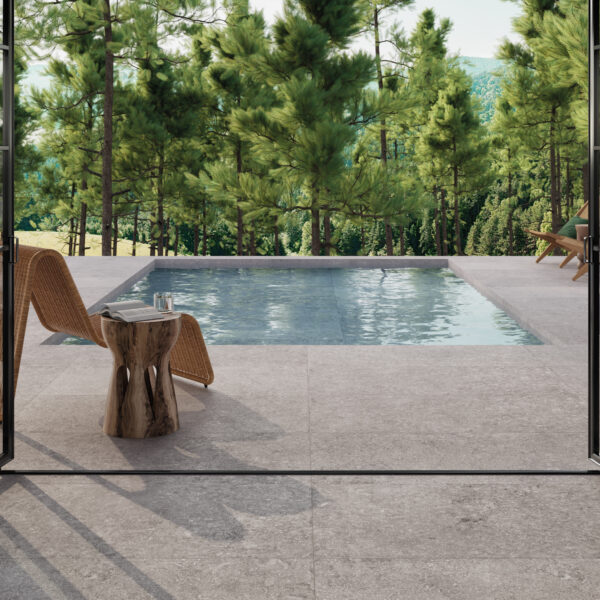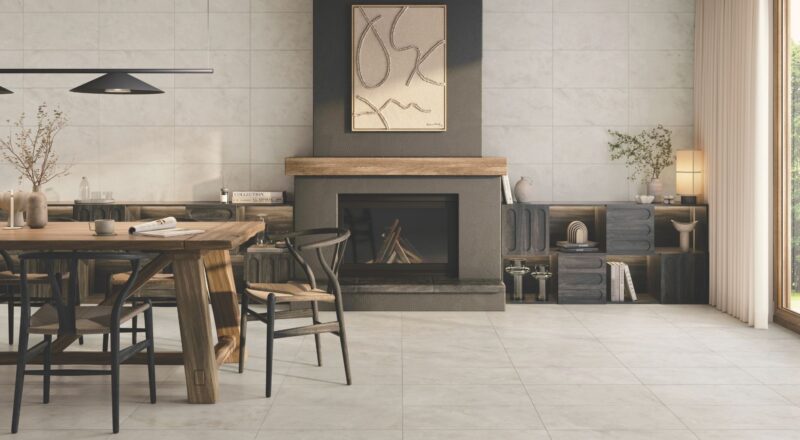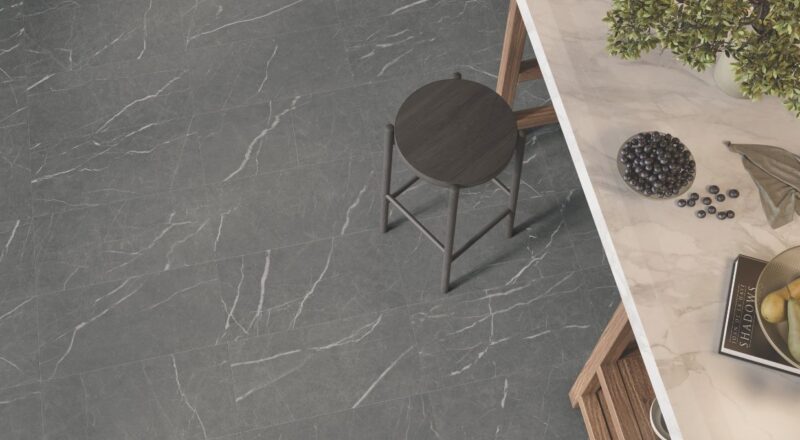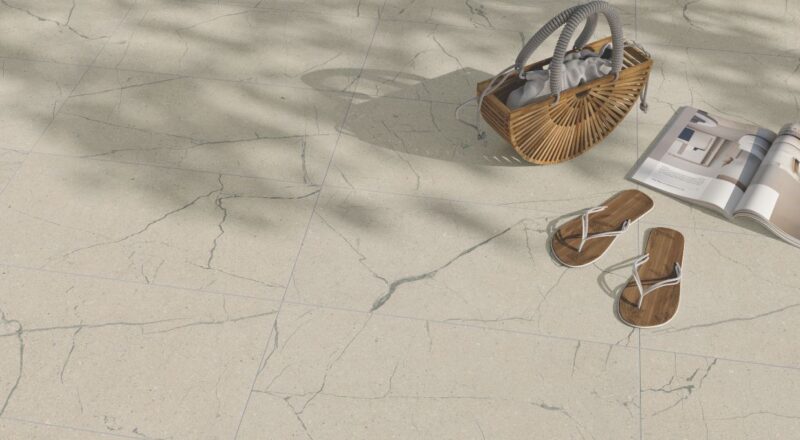There could easily be more names for this classic stone that we haven’t unearthed yet! But whichever name you call it, this blue coal limestone from Belgium, with its unmistakable smokey blue hue and high levels of visible ancient fossils, corals, and calcite veins has been a classic in design and architecture for centuries. It’s also the inspiration behind our Beljn porcelain floor and wall tile collection.
The History of Belgian Bluestone
We’re going way back in time to Belgian Bluestone’s rich geological history that began 350 million years ago when the sea covered the southern half of what is now Belgium. The period was known as the Carboniferous period, which takes its name from large underground coal deposits formed from the vegetation and large trees that grew in vast swamp forests. Several major biological, geological, and climatic events also occurred during this period. The climate during this period was uniformly tropical, with no distinct seasons.
How Did the Special Look of Belgian Bluestone Come About?

 Carbon limestone (Tournaisian) with crinoids, Petit Granit (Belgium), By Lysippos – Own work, CC BY-SA 3.0, via Wikimedia Commons
Carbon limestone (Tournaisian) with crinoids, Petit Granit (Belgium), By Lysippos – Own work, CC BY-SA 3.0, via Wikimedia Commons
Belgian Bluestone is a sedimentary rock formed from layers of accumulated sediment. Bluestone is considered “calcareous” (calcareous stones are composed mainly of calcium carbonate), as it was formed from layers of the calcareous material remains of underwater flora and fauna. The water was relatively low in the area, and as a result, living organisms called crinoids (animals with limestone skeletons left behind in the seabed) were at high levels in this area. Thus, Belgian Bluestone is characterized by a lot of gray and white fossils and the occasional calcite vein. Mainly crinoids, but also coral, and shells are clearly visible in Belgian Bluestone, distinguishing it from other limestones. The more visible the fossilized marine life, the more desirable and valuable the stone! The limestone’s blue color varies in tone, from almost black to a powdery blue-grey, depending on how much carbon the stone contains and the finish applied.
Arduin Petit Granit, by Hans Erren, CC BY-SA 3.0, via Wikimedia Commons
This sought-after “Petit Granit” bluestone can only be found in one specific carbonated geological vein that runs east to west across Belgium, and mostly comes from the Ardennes and Hainaut areas of Belgium. It has been extracted in several regions of South Belgium since the Middle Ages and used widely in sculpture and architecture, especially in Brussels and other Belgian cities. The name “Petit Granit” is an Appellation d’Origine Locale (Local Appellation of Origin) designation since 1999. Around fifteen quarries in Belgium are active today.
 19th century tombs in Bluestone and Carrara marble in Lokeren, Belgium, by Carolus, CC BY 4.0, via Wikimedia Commons
19th century tombs in Bluestone and Carrara marble in Lokeren, Belgium, by Carolus, CC BY 4.0, via Wikimedia Commons

Belgian Bluestone sculpture: Crest of Liège dated 1592, by Jacques Renier – Jrenier, CC BY-SA 3.0, via Wikimedia Commons
Meet Our New “Petit Granit”-Inspired Porcelain Tile Collection!
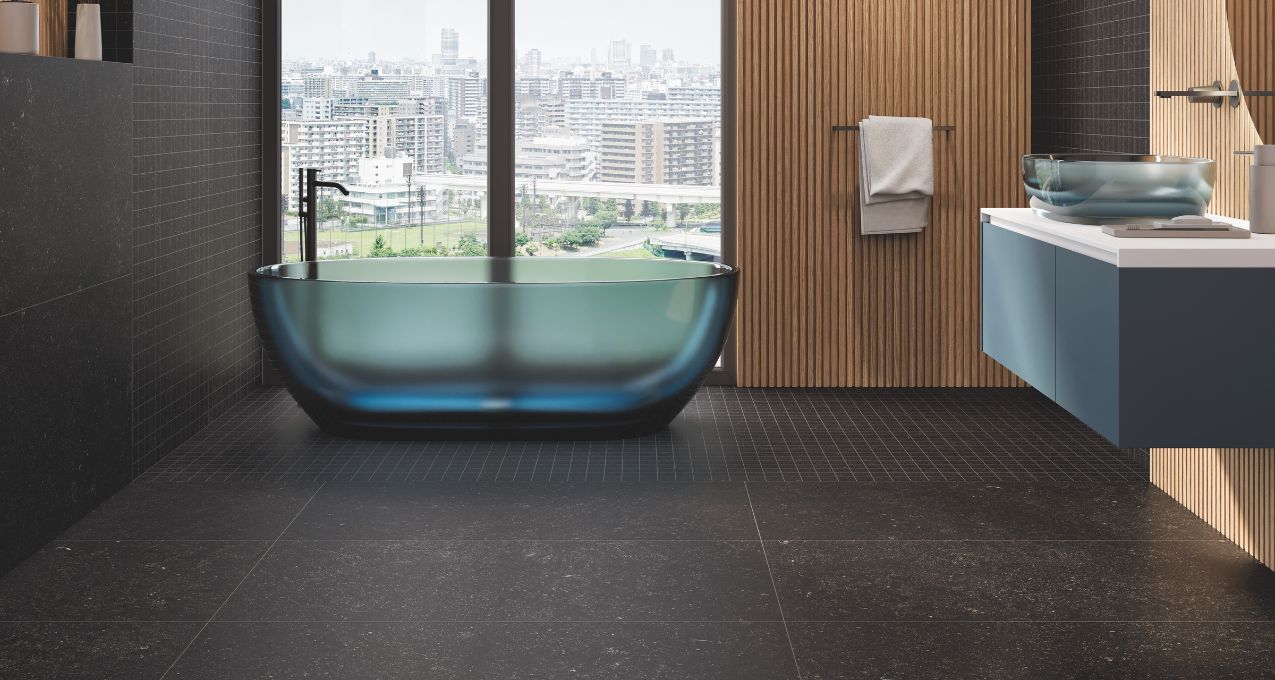
 Beljn porcelain tile in Black Iron
Beljn porcelain tile in Black Iron
There is no doubt that Belgian blue limestone is gorgeous, but look to Crossville for a stunning porcelain alternative! Our new Beljn porcelain tile collection evokes the history and look of Belgian Bluestone but is decidedly contemporary in color and sizing. Beljn’s five hues range from light to dark, and the tiles are available in two finishes: unpolished, which features Crossville’s unique FeatherSoft Finish for an extraordinarily touchable surface, and a bush-hammered style exterior finish designed for grand scale and high fashion in outdoor spaces.
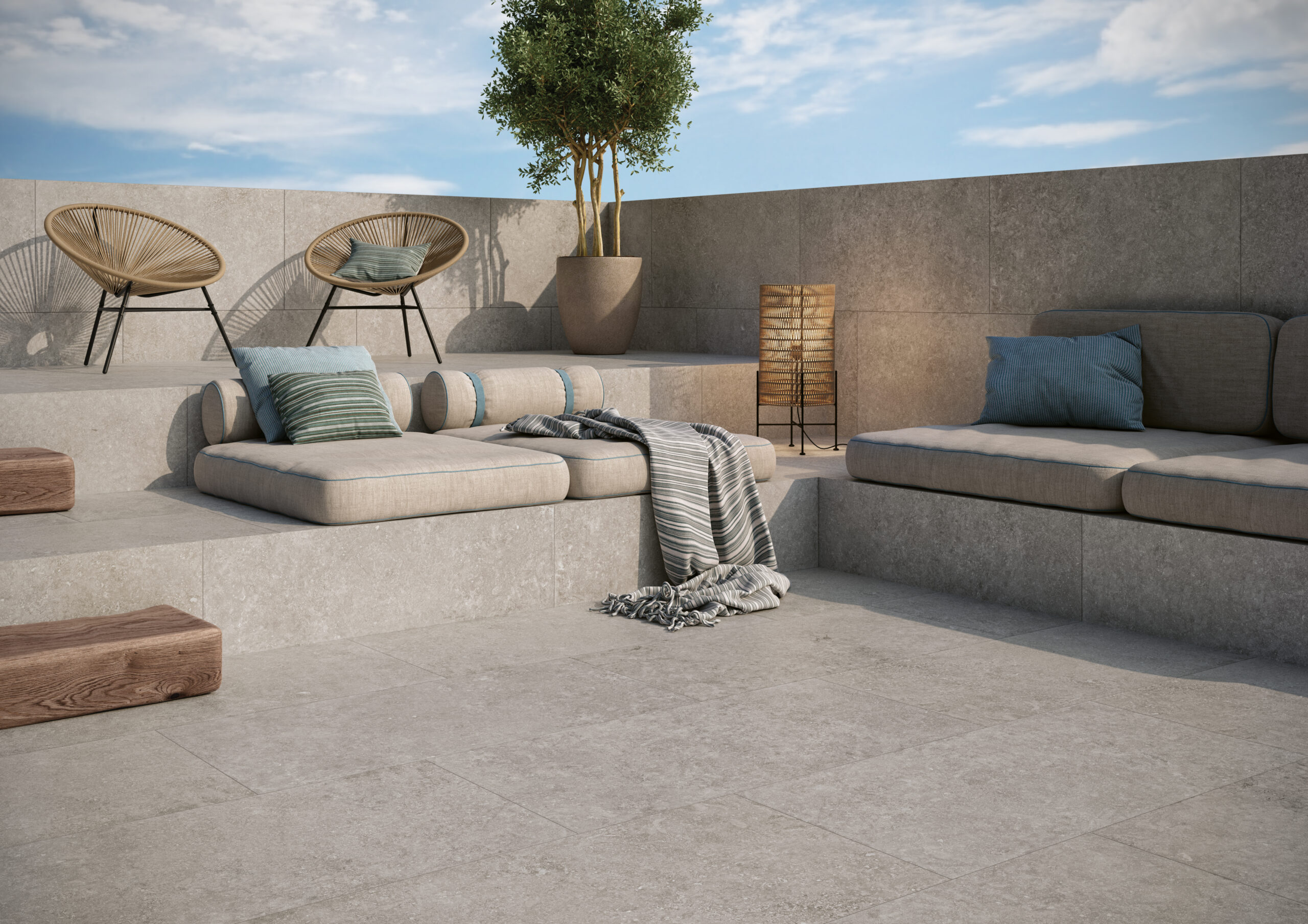
Beljn porcelain exterior finish tile in Platinum Solitaire
Beljn porcelain tile features white veining, coal lines, and visible fossils. Moreover, it’s a product you can feel good about because it’s carbon-neutral and made in America. Be sure to order a free tile sample to see this amazing new porcelain tile for yourself!
Love What You See? Great Design Starts With A Sample!
You can quickly and easily order a sample of any Crossville tile through Crossville’s Sample Express. To request free tile samples quickly, just set up an account here to get started. Once you have an account, ordering a tile sample is as simple as clicking a button — and samples are always free.
Other Great Reasons To Set Up An Account
- Order complimentary samples.
- Save your favorite products and resources.
- Create and organize projects.
- Review sample order history.


